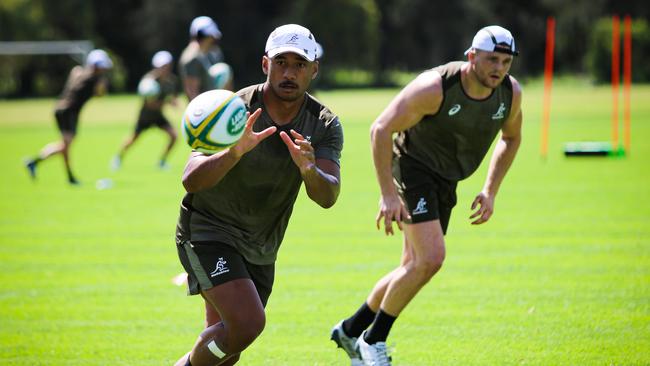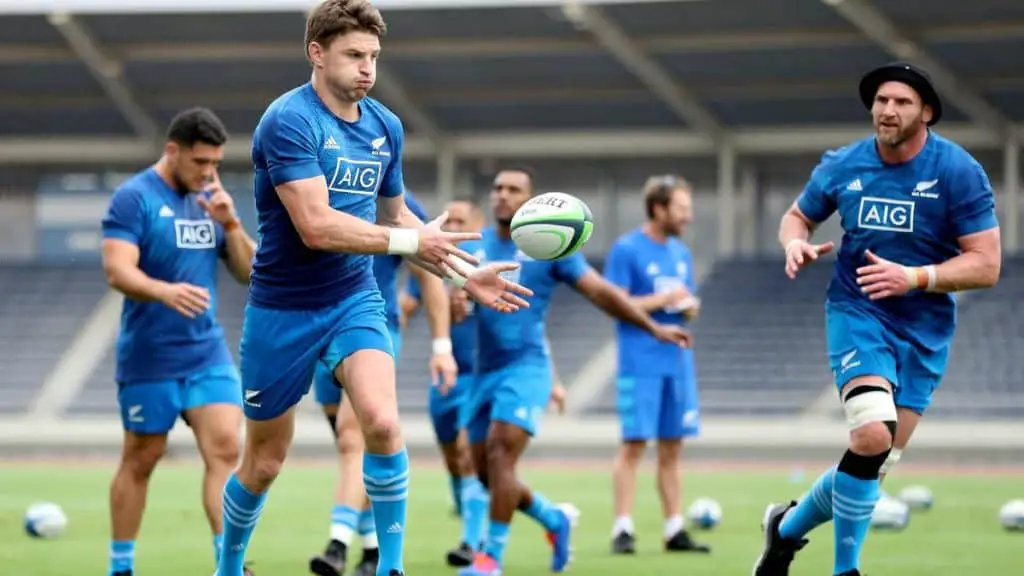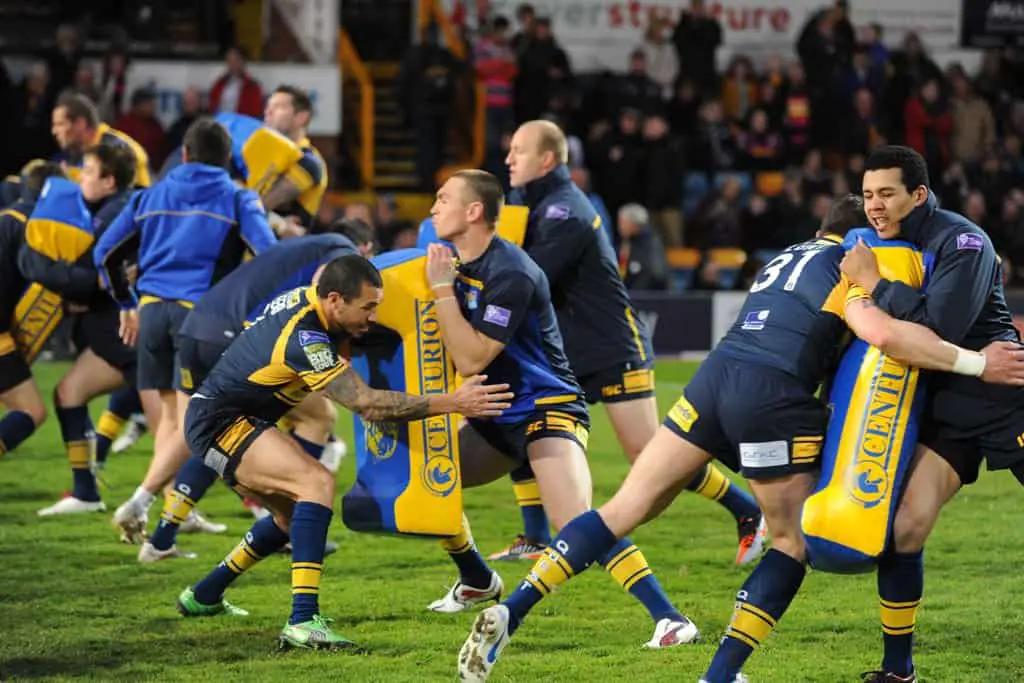
You have just signed up to play your first season of rugby. You probably are a little nervous about attending your first training, which is only natural. To calm your nerves and to make sure you are prepared we will breakdown everything you need to know about rugby training.
What to expect at your rugby training?
Rugby practice typically starts with a warm-up which may consist of some touch rugby or a team jog followed by stretching. After the warm up it is time to do some non contact drills such as passing and running lines. Then you will do some positional drills (backline plays, lineouts, ect.). Finally you will finish training with some contact exercises (tackling, mauling, cleaning out) and a mock game.

How Do You Warm Up For Rugby Training?
At rugby training there will typically be a warm up that lasts for 30mins. A standard warm up would be 15mins of touch rugby, 5mins jogging, 5mins easy sprints finishing off with 5mins of stretching and calisthenics (push ups, sit ups, squats).
The purpose of a rugby warm up is to get your body ready for the stress of rugby training. Rugby is an all over body workout which particularly utilises the legs, core, shoulders and back. You should take extra care to ensure these muscles are warm and stretched before starting training. Calisthenics such as push ups, squats and sit ups are great for getting blood pumping through your muscles, making them nice and warm.
Running and sprinting are a major component of rugby. As sprinting can easily lead to torn and strained muscles you should make sure you jog and do some light sprints to prepare your legs for all the running you will be doing during practice. I recommend jogging a few laps around the oval and then doing some sprints over different distances (10m, 20m, 30m), starting at 50% and building up to 75%.

Rugby warm-ups aren’t just for getting your muscles and joints ready. It is also used to develop your rugby skills. This is why touch rugby is such a good warm-up. Touch rugby can help you improve your passing, ball running, defensive line and communication with your teammates. These are skills which are vital if you want to be a top rugby player.
Many rugby clubs will start their warm-up with 15mins of touch rugby. To get the most out of touch rugby treat it like a real game and run proper lines, maintain proper position in defence and make correct passing decisions.
Here Is An Example Of A Rugby Warm-up
Touch Rugby – 15mins
Jogging – 5mins
Light Sprints – 10mins
Calisthenics/Stretching – 5mins
What Drills Do You Do During Rugby Practice?
You will practice a variety of drills at rugby training. They will focus on the fundamentals of rugby which include passing, catching, tackling and running with the ball. Depending on your position you will also practice kicking, scrummaging and lineouts. These drills can be done with and without contact.

After you have completed your warm-up it is time to start with some general non-contact drills. As a team you will start by performing simple running and passing drills.
Classic drills include running in a line with 3-5 players and simply passing the ball and across and back along the line as you jog up the field. This helps you improve your catching and passing and teaches you to remain behind your teammates when you are expecting the ball. You will also practice running different lines inside, outside and straight.
The drills will become more intense and complex as training progresses. After you have a run a number of team drills the forwards and backs will split up and you will start performing some position specific drills
You will practice situational drills. For example if you are in the backline you may practice different plays. For example you may run a play when you are in the centre of the field from the base of a ruck.
If you are in forwards you will practice lineouts, scrums and breakdown work. You will learn the lineout calls and practice throws and jumps. For scrums you will practice pushing against a scrum machine, which is a sled with pads on, allowing the front row to hit.
Non-contact drills will last for between 30-60mins and usually make up the majority of training. These drills are used to help you develop the skills you need to become a highly proficient rugby player. At first they will feel foreign and you may struggle with many of them. Do not get down, it is to be expected that you won’t light the world on fire at your first rugby practice. However, you will quickly get the hang of them and you should progress rapidly.
Do You Train Contact At Rugby Practice?
Contact training is often performed at rugby practice. It will typically be done earlier in the week so players will be fresh and recovered for their match. Contact will usually be trained at 50%-80% intensity depending on the drills, occasionally at 90%.

After you have performed your non contact drills it will be time to practice contact which will last for 30mins. There are many possible contact drills that your coach may run you through. Most likely you will be doing some tackling, breakdown and contested backline drills.
An example of tackling drills include setting up a ruck and having forwards pick and go. The defending side will then tackle the ball runner. This sequence will be continued until every forward has run with the ball and made multiple tackles.
Another common tackling drill is marking out a square usually 5X5m and then having one play run with the ball and attempt to score a try while the defender attempts to make an open field tackle. This drill is great for working on your ability to tackle 1v1 while it also develops your ability to beat a defender in the open field. This drill will help you develop your step.
If you are in the forward pack you will usually practice some contested breakdowns. One player will try to force a turnover and your job will be to clean him out. You may also run small passages of play. For example a small square may be marked out (10X10m) the forward pack may be split in two and the two sides will attempt to score against each other in this small square.
If you are in the backline you will be running your plays against a defensive line that will be attempting to tackle you. You will practice contested kick chases and receptions and practice running and tackling in open space.
Contact is a big part of rugby training and usually makes up 25% of rugby practice. There are a variety of different drills you will be performing to ensure you become a great ball runner and a ferocious defender. Due to the intensity of contact and the risk of injury it’s usually practiced earlier in the week so players will be fresh for the games on the weekend.
After you have completed your contact drills it is time to do a mock game. This can be done both with and without contact. It is up to your coach. The mock game will last for 15-30mins. This is your chance to put everything you have learned during the drills to the test. This will be your first real taste of what it feels like to play rugby.
Conclusion
If you have never stepped on a rugby pitch before you are probably a little nervous to show up to your first training session. Not to worry you will survive.
Training will typically start with a warm-up consisting of touch rugby, jogging, light sprinting and some calisthenics mixed with some stretching. Then you will do some non-contact team drills consisting of passing and running followed by some position specific drills.
Then you will do some contact drills such as situational play and tackling practice. Finally you will finish up with a mock match. Rugby training is great fun and it won’t be long until you are itching before every session.
